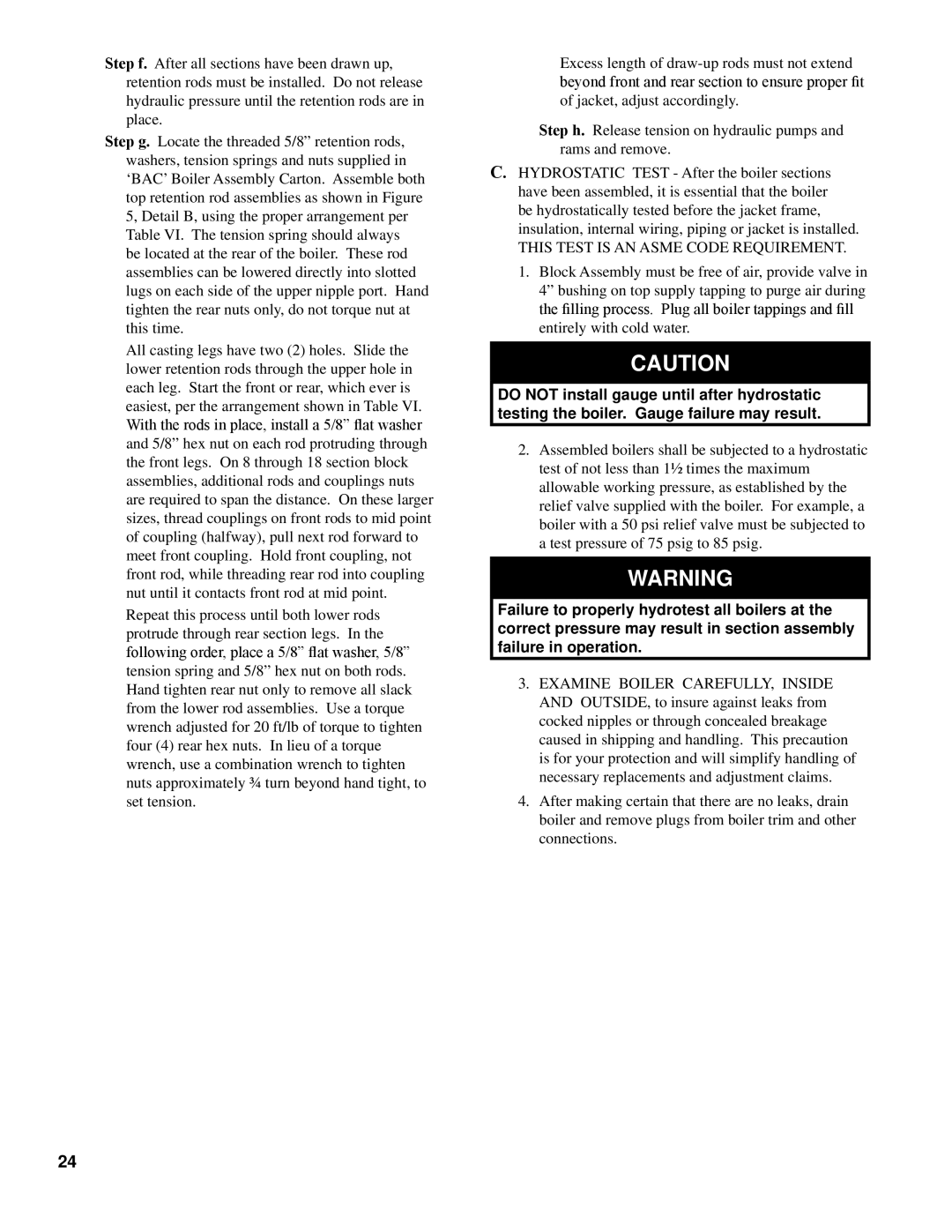FM01FD00B specifications
The Burnham FM01FD00B is a remarkable heating solution that combines efficiency, reliability, and advanced technology to meet the demands of modern homes and commercial spaces. Standing out in the crowded market of heating systems, the FM01FD00B is designed for those who prioritize both performance and energy savings.One of the most significant features of the Burnham FM01FD00B is its advanced combustion technology. The system utilizes a high-efficiency burner that maximizes fuel usage, resulting in lower operating costs and reduced environmental impact. The unit is engineered to provide consistent heat distribution, ensuring that every corner of a room reaches a comfortable temperature quickly and effectively.
In addition to its efficient burning capabilities, the FM01FD00B is compatible with multiple heating mediums, allowing it to adapt to various fuel types, including natural gas and propane. This versatility makes it an excellent choice for homeowners looking for flexible heating options that can cater to their specific needs.
The FM01FD00B also comes equipped with a state-of-the-art control system that offers precise temperature management. Users can easily program their desired heating schedule, ensuring optimal comfort at all times. The intuitive interface allows for easy adjustments, making it simple to maintain a cozy environment whether at home or away.
Another key characteristic is the unit's robust construction. Built with high-quality materials, the Burnham FM01FD00B is designed to withstand harsh conditions and provide lasting performance. The durable exterior is resistant to corrosion, further enhancing its longevity and reliability.
Moreover, the system features built-in safety mechanisms that protect against overheating and other potential hazards, ensuring peace of mind for users. This focus on safety extends to its low emissions, making it an eco-friendly choice for those looking to reduce their carbon footprint.
In conclusion, the Burnham FM01FD00B is a high-efficiency heating solution that excels in performance, adaptability, and safety. Its advanced technologies, robust construction, and user-friendly features make it an ideal choice for anyone seeking a dependable and efficient heating system for their home or business. Whether you prioritize energy savings, reliability, or comfort, the FM01FD00B stands out as a top contender in the heating market.

